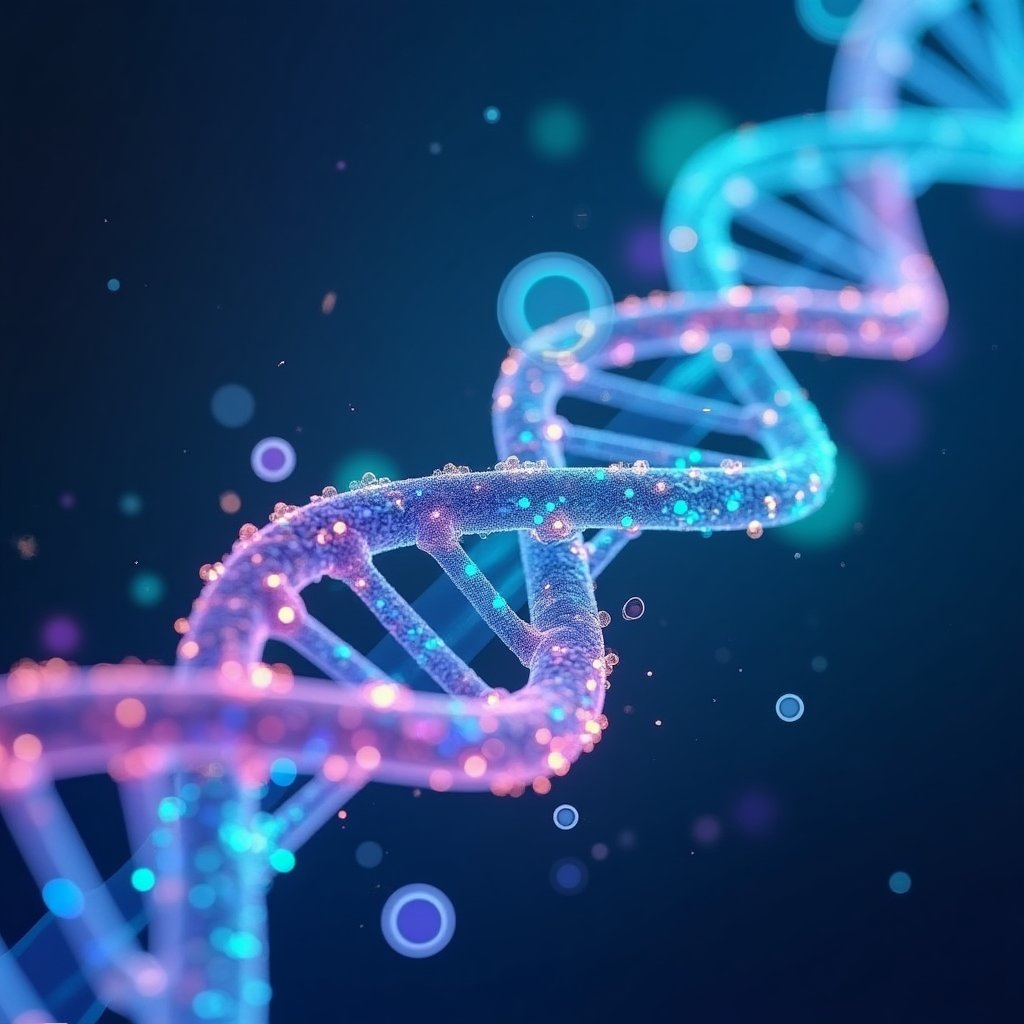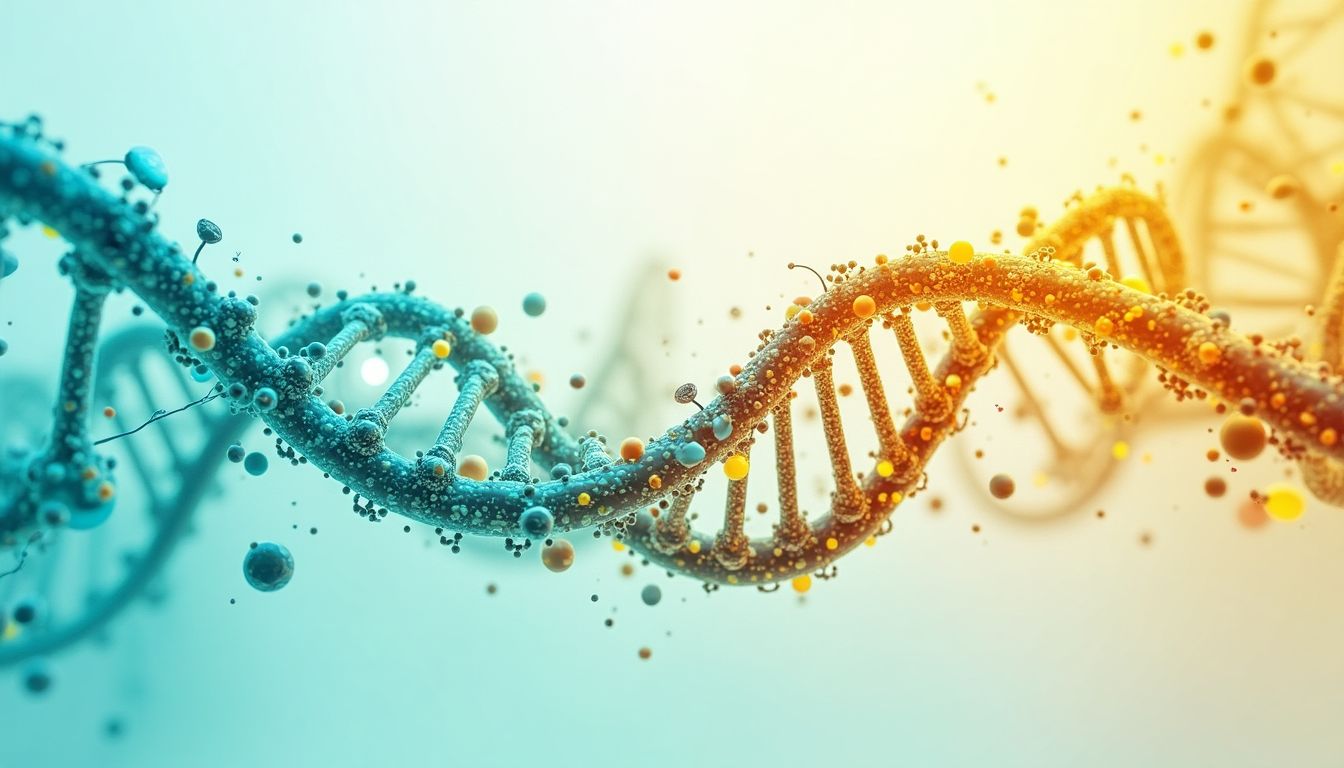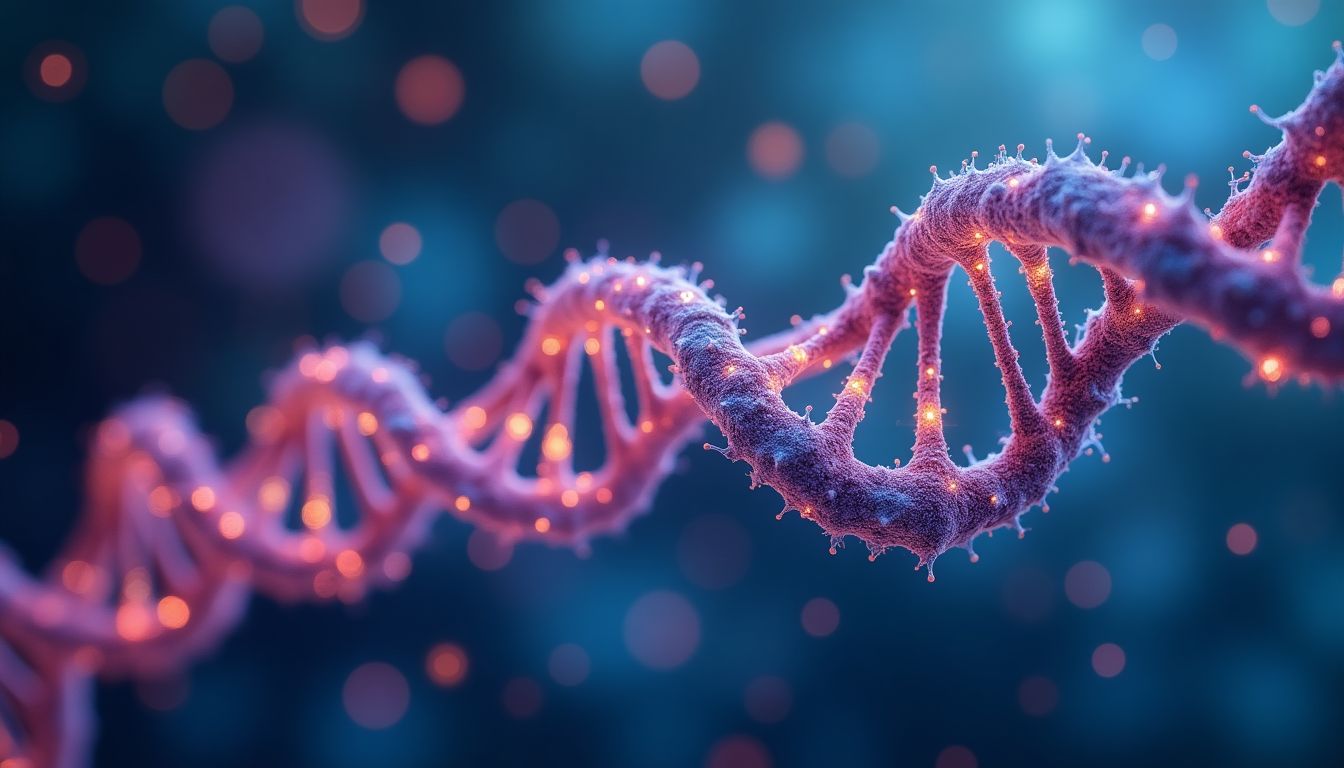What if the key to solving climate change, curing diseases, and ending world hunger was hidden in the very fabric of life itself—DNA? This isn’t the plot of a sci-fi blockbuster; it’s the reality we’re stepping into, thanks to the marriage of artificial intelligence and genetic engineering. From bacteria that eat plastic to crops that thrive in drought-stricken deserts, the possibilities are as wild as they are revolutionary. And while it might sound like something straight out of a Steven Spielberg movie, it’s happening right now in labs around the world.
Think about it: for decades, scientists have been tinkering with DNA, trying to unlock its secrets. But let’s be honest—biology is messy. It’s like trying to solve a Rubik’s Cube blindfolded while riding a rollercoaster. Enter AI, the ultimate problem-solver. With its ability to crunch massive datasets, predict outcomes, and optimize designs, AI is turning genetic engineering from a slow, trial-and-error process into a precision science. As Jennifer Doudna, the Nobel Prize-winning co-inventor of CRISPR, puts it, “We’re not just reading the book of life anymore—we’re rewriting it.” And with AI, we’re doing it faster and smarter than ever before.
But let’s not get ahead of ourselves. This isn’t just about creating glow-in-the-dark plants or designer babies (though, let’s be real, that’s pretty cool). It’s about tackling some of the biggest challenges humanity faces—climate change, food insecurity, and pandemics. As Bill Gates has pointed out, “The future of humanity depends on our ability to innovate in biology.” And AI is the turbocharger we’ve been waiting for.
So, buckle up. We’re about to dive into the DNA revolution, where AI is the conductor, and the symphony is life itself. From CRISPR to synthetic biology, we’ll explore how this tech is reshaping the world—one gene at a time.
1. The DNA Revolution: From CRISPR to Synthetic Biology
1.1 The Rise of CRISPR and Gene Editing
Let’s start with the rockstar of genetic engineering: CRISPR-Cas9. This groundbreaking tool, often compared to molecular scissors, allows scientists to cut and paste DNA with unprecedented precision. It’s like having a word processor for genes—except instead of fixing typos, you’re rewriting the code of life. CRISPR has already been used to create everything from disease-resistant crops to mosquitoes that can’t spread malaria. But here’s the catch: while CRISPR is powerful, it’s not perfect. Traditional gene-editing techniques are time-consuming, expensive, and often hit-or-miss. That’s where AI comes in.
1.2 Synthetic Biology: Building Life from Scratch
If CRISPR is the editor, synthetic biology is the architect. This field takes genetic engineering to the next level by designing entirely new biological systems from the ground up. Think of it as LEGO for life—except instead of plastic bricks, you’re working with DNA. Scientists have already created synthetic organisms that can produce biofuels, clean up oil spills, and even detect cancer. But here’s the kicker: designing these organisms is like trying to solve a million-piece puzzle blindfolded. That’s where AI shines, turning chaos into clarity.
1.3 The Role of AI in Accelerating Genetic Engineering
AI is the secret sauce that’s making genetic engineering faster, cheaper, and more accurate. By analyzing massive datasets, AI can predict how genetic changes will play out in real life, saving scientists countless hours of trial and error. For example, Google DeepMind’s AlphaFold has revolutionized protein structure prediction, a critical step in designing custom organisms. And it’s not just about predicting outcomes—AI is also automating lab processes, turning genetic engineering into a high-speed, high-precision science. The result? A future where we can design life to solve the world’s biggest problems.
2. Global Challenges and the Need for Custom Organisms
2.1 Climate Change and Environmental Restoration
Climate change is the ultimate party crasher, showing up uninvited and wreaking havoc on our planet. But what if we could fight back with custom organisms designed to clean up the mess? Imagine bacteria that can munch on plastic like it’s a gourmet meal or algae that slurps up carbon dioxide faster than a kid with a milkshake. Sounds like science fiction, right? Not anymore. AI is helping scientists design organisms that can tackle environmental disasters head-on.
Take carbon capture, for example. Researchers are using AI to engineer algae that can absorb CO2 more efficiently. These tiny green powerhouses could be deployed in oceans or industrial areas to reduce greenhouse gases. And it’s not just about carbon—AI-designed organisms could clean up oil spills, break down toxic waste, and even restore damaged ecosystems. Think of them as nature’s cleanup crew, but with a high-tech upgrade.
One standout example is Synthetic Genomics, a company co-founded by Craig Venter, a pioneer in synthetic biology. They’re working on algae that can produce biofuels while capturing carbon. It’s like hitting two birds with one stone—reducing emissions and creating renewable energy. Now that’s what I call a win-win.
2.2 Food Insecurity and Agricultural Innovation
Let’s talk about food. We all need it, but not everyone has enough of it. With the global population expected to hit 10 billion by 2050, we’re going to need some serious agricultural innovation to keep up. Enter AI-designed crops. These aren’t your grandma’s tomatoes—they’re supercharged plants engineered to grow faster, resist droughts, and pack more nutrients.
For instance, scientists are using AI to develop rice varieties that can thrive in harsh conditions. Rice is a staple food for over half the world’s population, so improving its resilience could be a game-changer. AI analyzes genetic data to identify traits that make crops more robust, like drought tolerance or pest resistance. It’s like giving plants a superhero cape—except instead of flying, they’re feeding millions.
One exciting project comes from the International Rice Research Institute, which is using AI to optimize rice breeding. By combining genetic data with environmental factors, they’re creating rice varieties that can grow in less-than-ideal conditions. It’s a step toward ensuring food security for everyone, even as climate change makes farming more challenging.
2.3 Healthcare and Disease Eradication
Now, let’s dive into healthcare. Imagine a world where diseases are stopped in their tracks before they even start. Sounds like a dream, right? Well, AI is making it possible. By designing custom organisms, scientists are developing new ways to fight diseases and deliver treatments more effectively.
One of the biggest challenges in healthcare is antibiotic resistance. Bacteria are evolving faster than we can develop new drugs, but AI is helping us stay ahead of the curve. Researchers are using AI to design bacteria that can target and destroy harmful pathogens. It’s like sending in a microscopic SWAT team to take out the bad guys.
Another groundbreaking application is in drug delivery. Scientists are engineering bacteria to deliver medications directly to diseased cells, minimizing side effects and improving treatment outcomes. For example, the Broad Institute is using AI to design bacteria that can deliver cancer-fighting drugs with pinpoint accuracy. It’s a revolutionary approach that could change the way we treat diseases.
3. The Science Behind AI-Driven Genetic Engineering
3.1 Machine Learning and Genomic Data Analysis
So, how does AI actually help with genetic engineering? It all starts with data—lots and lots of data. Genomic data is incredibly complex, with billions of base pairs to analyze. Trying to make sense of it all is like finding a needle in a haystack the size of a football field. That’s where machine learning comes in.
AI algorithms can sift through massive datasets to identify patterns and correlations that humans might miss. For example, tools like AlphaFold, developed by DeepMind, use AI to predict protein structures. This is crucial because proteins are the building blocks of life, and understanding their structure can help scientists design better drugs and organisms.
But it’s not just about proteins. AI can analyze entire genomes to identify genes associated with specific traits or diseases. This allows researchers to target their efforts more effectively, whether they’re designing crops or developing new therapies. It’s like having a GPS for the genome—AI helps us navigate the complex landscape of DNA.
3.2 Predictive Modeling and Simulation
Once we’ve identified the genes we want to tweak, the next step is to predict what will happen when we make those changes. This is where predictive modeling comes in. AI can simulate genetic modifications and predict their outcomes, saving time and resources in the lab.
For example, researchers can use AI to model how a specific gene edit will affect an organism’s behavior or traits. This is especially useful for complex traits like disease resistance or crop yield, where multiple genes are involved. By running simulations, scientists can narrow down the most promising designs before testing them in the real world.
One cool example is the use of generative adversarial networks (GANs) in genetic engineering. GANs are a type of AI that can generate new data based on existing patterns. In this case, they’re being used to design new genetic sequences that could lead to breakthroughs in medicine, agriculture, and more. It’s like having a virtual lab where you can experiment without the mess.
3.3 Automation and High-Throughput Experimentation
Finally, let’s talk about automation. Genetic engineering involves a lot of trial and error, which can be time-consuming and expensive. But AI is changing the game by automating lab processes and enabling high-throughput experimentation.
Imagine a lab where robots handle everything from pipetting to DNA sequencing, all guided by AI. This allows researchers to test hundreds or even thousands of genetic designs in a fraction of the time. It’s like having a team of tireless lab assistants who never need coffee breaks.
One example of this is the National Human Genome Research Institute, which is using AI-driven automation to accelerate genetic research. By combining AI with robotics, they’re able to process massive amounts of data and generate results faster than ever before. It’s a glimpse into the future of genetic engineering—one where AI and automation work hand in hand to push the boundaries of what’s possible.
4. Ethical and Societal Implications
4.1 The Ethics of Designing Life
Designing custom organisms sounds like something straight out of a sci-fi movie, but it’s happening right now. And with great power comes great responsibility. The ability to edit DNA and create life from scratch raises some serious ethical questions. Are we playing "God"? What happens if something goes wrong? These aren’t just philosophical musings—they’re real concerns that scientists, ethicists, and policymakers are grappling with.
For example, CRISPR technology has already been used to edit the genes of human embryos, sparking a global debate about the ethics of "designer babies." While the potential to eliminate genetic diseases is incredible, the idea of creating "perfect" humans raises fears of eugenics and inequality. Similarly, designing organisms for environmental or agricultural purposes could have unintended consequences. What if a genetically modified organism escapes into the wild and disrupts ecosystems? These are questions we can’t afford to ignore.
Key ethical concerns include:
- Playing "God": The moral implications of creating life.
- Unintended consequences: The risk of unforeseen ecological or health impacts.
- Equity and access: Ensuring that these technologies benefit everyone, not just the wealthy.
4.2 Biosafety and Biosecurity
One of the biggest challenges in genetic engineering is ensuring that engineered organisms don’t cause harm. This is where biosafety and biosecurity come in. Biosafety focuses on preventing accidental release, while biosecurity deals with intentional misuse, such as bioterrorism.
For instance, in 2019, researchers at the Broad Institute developed a "kill switch" for genetically modified bacteria, ensuring they self-destruct if they escape the lab. While this is a step in the right direction, it’s not foolproof. AI can help by predicting potential risks and designing fail-safes, but we still need robust regulations and oversight.
Strategies for biosafety and biosecurity include:
- Containment: Using physical and biological barriers to prevent escape.
- Monitoring: Tracking engineered organisms in real-time using AI and sensors.
- Regulation: Establishing international standards for genetic engineering.
4.3 Equity and Access
Imagine a world where only the richest countries have access to life-saving genetic technologies. It’s a scary thought, but it’s a real possibility. The cost of developing and deploying AI-driven genetic engineering is high, and there’s a risk that it could widen the gap between rich and poor nations.
For example, while the U.S. and China are leading the charge in AI and biotechnology, many developing countries are being left behind. This isn’t just unfair—it’s dangerous. Diseases and environmental challenges don’t respect borders, and solutions need to be global. Organizations like the World Health Organization are working to address these issues, but more needs to be done.
To ensure equity and access, we need:
- Global collaboration: Sharing knowledge and resources across borders.
- Affordable solutions: Developing low-cost technologies for developing countries.
- Education and training: Empowering local communities to use these technologies.
5. Current Breakthroughs and Future Possibilities
5.1 Real-World Applications Today
AI-driven genetic engineering isn’t just a futuristic dream—it’s already making waves in the real world. From medicine to agriculture, custom organisms are being used to solve some of humanity’s biggest challenges.
For example, researchers at UCSF have used AI to design bacteria that can detect and treat diseases in the gut. These "smart probiotics" could revolutionize healthcare by delivering targeted therapies without the need for invasive procedures. Similarly, companies like Indigo Agriculture are using AI to engineer crops that are more resistant to drought and pests, helping farmers grow more food with fewer resources.
Here are some real-world applications of AI-driven genetic engineering:
- Medicine: AI-designed bacteria for targeted drug delivery.
- Agriculture: Drought-resistant crops engineered using AI.
- Environment: Algae designed to absorb carbon dioxide from the atmosphere.
5.2 The Future of AI and Genetic Engineering
The possibilities for AI and genetic engineering are virtually limitless. In the next decade, we could see everything from personalized medicine to biofactories that produce everything from food to fuel. Imagine a world where your doctor prescribes a custom-designed organism to treat your illness, or where entire cities are powered by algae-based biofuels. It’s not just possible—it’s probable.
One exciting area of research is the use of AI to unlock entirely new branches of biology. For example, scientists at Harvard University are using AI to explore the potential of "xenobiology," the study of synthetic life forms with entirely new genetic codes. This could lead to organisms that are completely immune to viruses or capable of surviving in extreme environments.
Future possibilities include:
- Personalized medicine: Custom organisms designed to treat individual patients.
- Biofactories: Organisms engineered to produce food, fuel, and materials.
- Space exploration: Custom organisms designed to survive on other planets.
As we look to the future, one thing is clear: AI and genetic engineering have the potential to transform our world in ways we can’t even imagine. But with great power comes great responsibility. We must ensure that these technologies are developed ethically and equitably, so that everyone can benefit from the DNA revolution.
6. AI Solutions: How Would AI Tackle This Issue?
6.1 Step 1: Data Collection and Integration
The foundation of AI-driven genetic engineering lies in data. The first step is to aggregate vast amounts of genomic, proteomic, and environmental data. This includes sequencing the DNA of target organisms, mapping protein structures, and gathering environmental data to understand the context in which these organisms will operate. AI tools like Google DeepMind's AlphaFold have already revolutionized protein structure prediction, but the next frontier is integrating this data into comprehensive models that can predict how genetic modifications will play out in real-world scenarios.
For example, researchers at The Broad Institute are using AI to analyze genomic data from thousands of species to identify patterns that could lead to breakthroughs in disease resistance or environmental adaptation. By leveraging AI, we can identify correlations and causal relationships that would be impossible for humans to detect manually.
6.2 Step 2: Predictive Modeling and Design
Once the data is collected, the next step is to use AI to simulate genetic modifications and predict their outcomes. Tools like generative adversarial networks (GANs) can be used to design new organisms or optimize existing ones. For instance, AI can predict how a specific gene edit will affect an organism's behavior, metabolism, or interaction with its environment.
Take the example of SynBioBeta, a leader in synthetic biology, which is using AI to design microbes that can produce biofuels more efficiently. By simulating thousands of genetic variations, AI can identify the most promising designs before they are ever tested in a lab, saving time and resources.
6.3 Step 3: High-Throughput Experimentation
With AI-designed organisms in hand, the next step is to test them in the lab. High-throughput experimentation, powered by AI-driven automation, allows researchers to rapidly prototype and test genetic designs. Automated lab systems can perform thousands of experiments simultaneously, generating data that can be fed back into AI models for refinement.
Companies like Zymergen are already using AI to automate lab processes, enabling the rapid iteration of genetic designs. This approach not only speeds up the development process but also increases the likelihood of success by allowing researchers to test a wider range of possibilities.
6.4 Step 4: Deployment and Monitoring
Once a promising organism has been designed and tested, the next step is deployment. This involves introducing the organism into controlled environments, such as bioreactors or agricultural fields, and monitoring its performance. AI can play a crucial role here by providing real-time data on how the organism is functioning and detecting any anomalies.
For example, Indigo Agriculture is using AI to monitor the performance of microbial treatments in agricultural fields, ensuring that they are delivering the expected benefits. By continuously monitoring and analyzing data, AI can help optimize the performance of engineered organisms and ensure their safe and effective use.
6.5 Step 5: Scaling and Optimization
The final step is scaling successful designs for global impact. This involves not only producing the organisms at scale but also optimizing their performance based on real-world data. AI can help identify the best conditions for growth, the most effective delivery methods, and the most efficient ways to integrate these organisms into existing systems.
For instance, Ginkgo Bioworks is using AI to scale the production of engineered microbes for a variety of applications, from agriculture to industrial manufacturing. By continuously refining their designs based on real-world data, they are able to achieve greater efficiency and effectiveness.
Action Schedule/Roadmap (Day 1 to Year 2)
Day 1: Assemble a multidisciplinary team of geneticists, AI experts, and ethicists. Key personnel could include leaders from MIT, Stanford, and Google DeepMind.
Day 2: Secure funding and partnerships with leading institutions and companies. Potential partners could include The Bill & Melinda Gates Foundation for agricultural applications and NIH for healthcare initiatives.
Week 1: Begin data collection from genomic databases and environmental studies. Utilize resources like NCBI and EBI to gather comprehensive datasets.
Week 2: Develop initial AI models for predictive genetic design. Use tools like TensorFlow and PyTorch to build and train models.
Month 1: Launch high-throughput experimentation in automated labs. Partner with companies like Illumina for sequencing and Thermo Fisher Scientific for lab automation.
Month 2: Analyze results and refine AI models. Use feedback loops to improve the accuracy and effectiveness of genetic designs.
Year 1: Deploy first AI-designed organisms in controlled environments. Monitor performance using AI-driven analytics platforms like Palantir.
Year 1.5: Scale successful designs and address ethical concerns. Work with regulatory bodies like FDA and EPA to ensure compliance and safety.
Year 2: Achieve global impact with AI-driven genetic solutions. Collaborate with international organizations like WHO and UN to deploy these technologies worldwide.
Unlocking the Future: The Promise of AI and Genetic Engineering
The fusion of AI and genetic engineering is not just a scientific breakthrough—it's a paradigm shift in how we approach some of the most pressing challenges of our time. From climate change to food insecurity, the potential applications are as vast as they are transformative. Imagine a world where bacteria can clean up oil spills, crops grow in barren deserts, and diseases are eradicated before they even emerge. This is not a distant dream; it's a future that AI is helping us build today.
But with great power comes great responsibility. As we move forward, we must ensure that these technologies are developed ethically and equitably. The roadmap outlined in this article provides a clear path to harnessing the potential of AI and the DNA revolution. By assembling the right team, securing the necessary resources, and leveraging the latest advancements in AI and biotechnology, we can turn this vision into reality.
The future is not just about surviving—it's about thriving. And AI is the tool that will help us get there. So, what will you do to be part of this revolution? Will you be a passive observer, or will you take action to shape the future? The choice is yours.
Join the conversation and share your thoughts in the comments below. Don't forget to subscribe to our newsletter for more insights and updates. Together, we can build a brighter future—one where AI and genetic engineering unlock the full potential of life itself.
Frequently Asked Questions (FAQ)
Q1: What is synthetic biology?
Synthetic biology is the science of designing and building new biological parts, devices, and systems. Think of it like LEGO for life—scientists use tools like CRISPR and AI to create organisms that can do things nature never imagined. For example, researchers at MIT have engineered bacteria that can clean up oil spills or produce biofuels.
Q2: How does AI improve genetic engineering?
AI is like a super-smart assistant for genetic engineers. It can analyze massive amounts of genetic data, predict how changes to DNA will affect an organism, and even design new genes from scratch. Tools like Google DeepMind’s AlphaFold are already helping scientists understand protein structures, which is crucial for designing custom organisms. Without AI, this process would take years—now it takes weeks or even days.
Q3: Are there risks to designing custom organisms?
Yes, there are risks. For example, if a genetically modified organism escapes into the wild, it could disrupt ecosystems. That’s why scientists are working on strict safety measures, like “kill switches” that can deactivate engineered organisms if needed. Organizations like the World Health Organization (WHO) and Environmental Protection Agency (EPA) are also involved in creating guidelines to ensure these technologies are used responsibly.
Q4: Who is leading this field?
Some of the biggest names in science and tech are driving this revolution. Universities like Stanford and Harvard are at the forefront of genetic engineering research. Companies like Synthego and Ginkgo Bioworks are using AI to design custom organisms for everything from medicine to agriculture.
Q5: How soon can we expect to see results?
Some results are already here! For example, AI-designed algae are being tested for carbon capture, and genetically modified crops are helping farmers grow food in harsh conditions. Within the next decade, we could see even bigger breakthroughs, like personalized medicine tailored to your DNA or bacteria that can produce clean energy. The future is closer than you think!
Q6: What are the ethical concerns around AI and genetic engineering?
Ethics is a big deal in this field. Some people worry about “playing God” by designing life, while others fear that these technologies could widen the gap between rich and poor countries. Organizations like the Presidential Commission for the Study of Bioethical Issues are working to address these concerns and ensure that AI-driven genetic engineering benefits everyone, not just a few.
Q7: Can AI help fight diseases?
Absolutely! AI is already being used to design organisms that can deliver drugs directly to cancer cells or fight antibiotic-resistant bacteria. For example, researchers at The Broad Institute are using AI to identify new targets for drugs, which could lead to faster cures for diseases like Alzheimer’s and diabetes.
Q8: What’s the role of governments in regulating this technology?
Governments play a crucial role in ensuring that AI and genetic engineering are used safely and ethically. Agencies like the Food and Drug Administration (FDA) in the U.S. and the European Commission are working on regulations to oversee the development and deployment of these technologies. Without proper oversight, the risks could outweigh the benefits.
Q9: Can I learn more about AI and genetic engineering?
Of course! If you’re curious, check out resources from Nature or Science Magazine. You can also follow leading researchers and organizations on social media platforms like X (formerly Twitter) or LinkedIn to stay updated on the latest breakthroughs.
Q10: How can I get involved in this field?
If you’re passionate about AI and biology, there are plenty of ways to get started. Consider studying bioinformatics, synthetic biology, or computer science at a university like UC Berkeley or Caltech. You can also join online communities like BioStars to connect with other enthusiasts and professionals in the field.
Wait! There's more...check out our gripping short story that continues the journey: The Genesis Protocol - Life Beyond the Edge of Reason
Disclaimer: This article may contain affiliate links. If you click on these links and make a purchase, we may receive a commission at no additional cost to you. Our recommendations and reviews are always independent and objective, aiming to provide you with the best information and resources.
Get Exclusive Stories, Photos, Art & Offers - Subscribe Today!





























Post Comment
You must be logged in to post a comment.